10 Vintage Guitars That Changed Music History
Guitars have played a central role in transforming the music scene throughout the years. From blues to rock, the right guitar can take a song to the next level. Certain vintage guitars are famous for their unique sound and the stories they tell. These instruments are not only valuable for their craftsmanship but also for their connection to musical moments. It is fascinating to see how some guitars have become symbols of music history.
This post may contain affiliate links, which helps keep this content free. Please read our disclosure for more info.
Fender Stratocaster (1954)
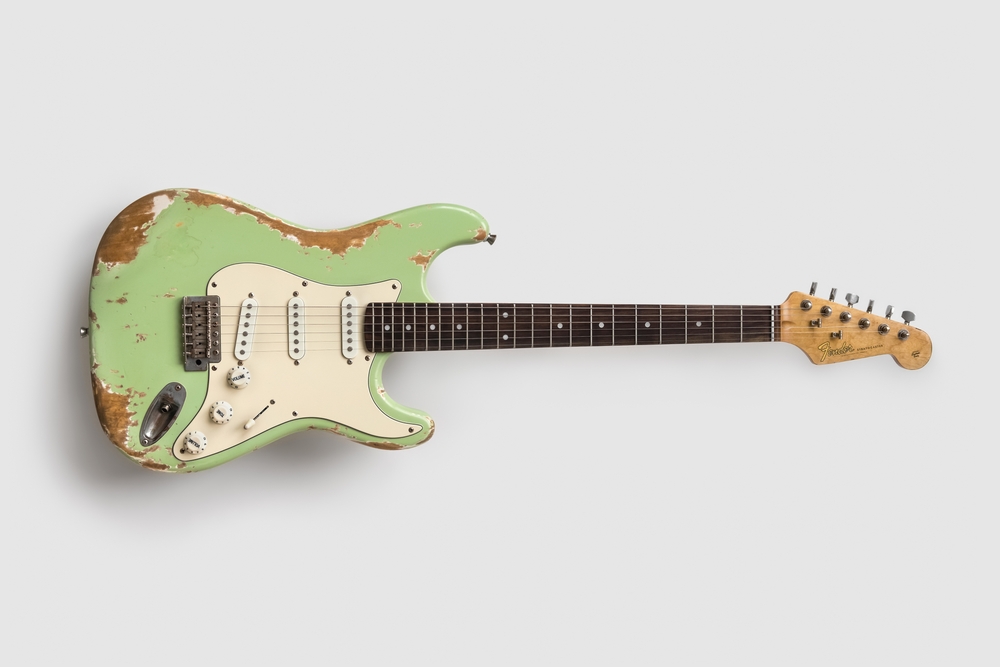
The Fender Stratocaster, introduced in 1954, became one of the most iconic electric guitars ever. Known for its contoured body and distinctive “double cutaway” shape, it quickly caught the attention of musicians worldwide. Artists like Jimi Hendrix and Eric Clapton adopted the Stratocaster for its versatile sound and playability. The Strat’s bright, clear tones made it perfect for rock, blues, and beyond.
The Stratocaster’s design set the standard for electric guitars for decades. Its three single-coil pickups allowed players to explore a range of sounds. The innovative synchronized tremolo system gave the guitar a signature “whammy” effect. This guitar changed the landscape of rock and roll and continues to influence generations of musicians.
Gibson Les Paul Standard (1959)
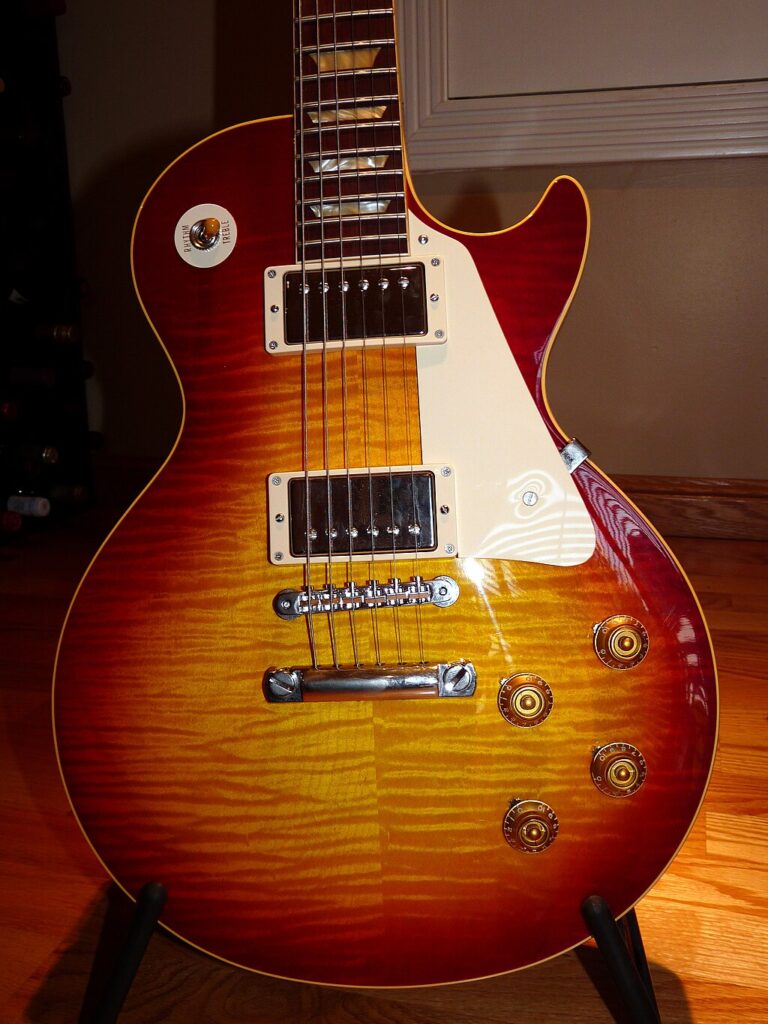
The 1959 Gibson Les Paul Standard is considered a cornerstone of rock history. With its beautiful sunburst finish and solid mahogany body, it provides a rich, warm tone that became essential for the music of the 1960s. Legendary guitarists like Jimmy Page and Slash made the Les Paul their instrument of choice, showcasing its power in rock anthems. Its sustain and powerful sound made it the go-to guitar for heavy riffs and solos.
The Les Paul’s history is deeply tied to the evolution of rock, blues, and metal. Its set-neck construction and humbucking pickups reduced unwanted noise and offered a thick, punchy sound. Due to its durability and craftsmanship, this guitar has become a symbol of rock royalty. Despite its high price tag, the Les Paul continues to be revered by guitarists around the world.
Fender Telecaster (1950)
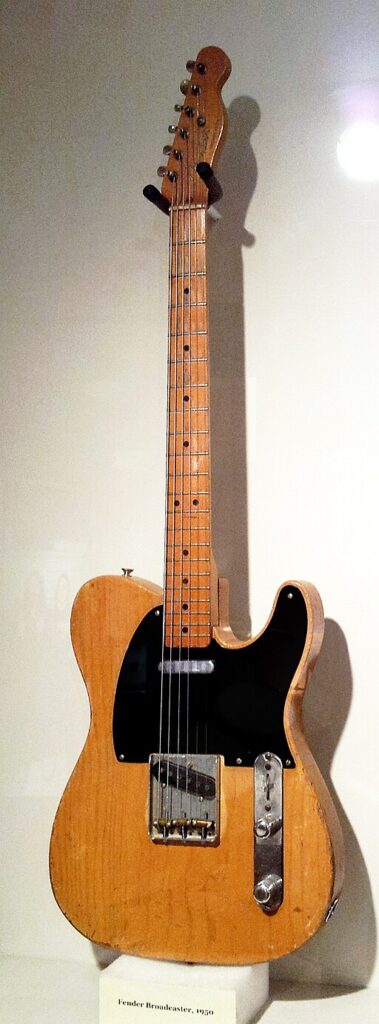
Introduced in 1950, the Fender Telecaster is one of the first mass-produced solid-body electric guitars. Its simple design features a single-cutaway body and two single-coil pickups, making it easy to play and adjust. The Telecaster’s bright, cutting tone has made it a staple in country, rock, and punk music. Iconic musicians like Bruce Springsteen and Keith Richards have relied on it for their signature sounds.
The Telecaster’s sharp attack and twangy tone contributed to the distinct sound of early rock and roll. It became a favorite for lead and rhythm players alike, offering excellent sustain and a tight, punchy sound. The guitar’s ease of use made it accessible to musicians of all levels. Over the years, the Telecaster has remained a favorite for its straightforward, no-nonsense style.
Gibson SG (1961)
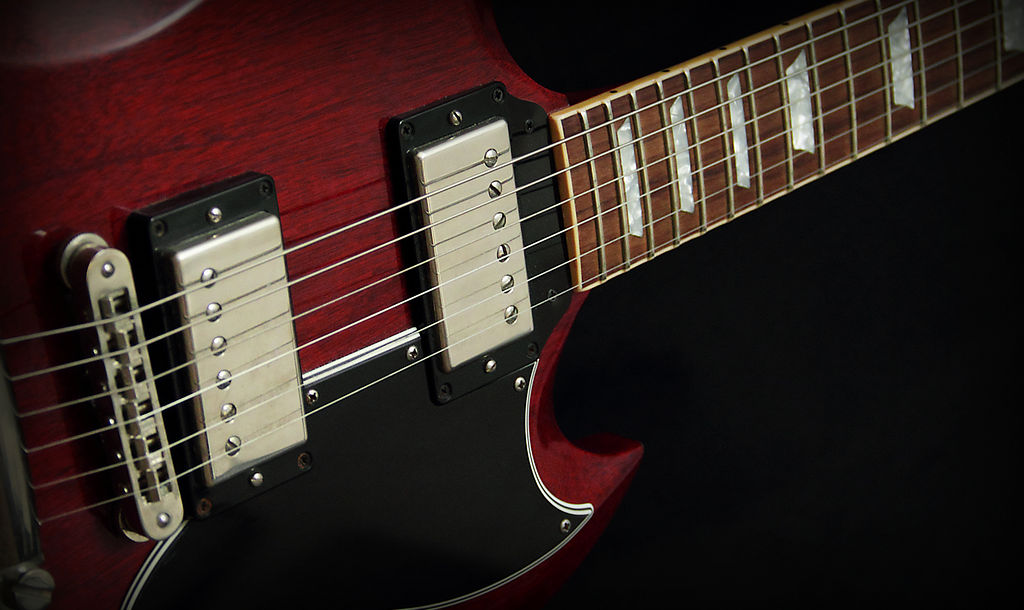
The Gibson SG, introduced in 1961, revolutionized the world of rock music with its sleek, slim design and powerful tone. This guitar was designed to be lighter and more comfortable than the Les Paul, making it ideal for fast playing. Iconic rock bands like AC/DC and Black Sabbath adopted the SG for its aggressive sound. The guitar’s dual humbucker pickups added depth to its tone, which helped define the heavy rock sound of the 60s and 70s.
The SG’s solid mahogany body and dual-cutaway design gave it excellent sustain. It became synonymous with hard rock and heavy metal, thanks to its high-output pickups and smooth fretboard. This guitar’s sharp, biting tone made it a perfect fit for fast, distortion-heavy riffs. The SG remains a favorite among metal and hard rock musicians for its power and style.
Gretsch White Falcon (1955)
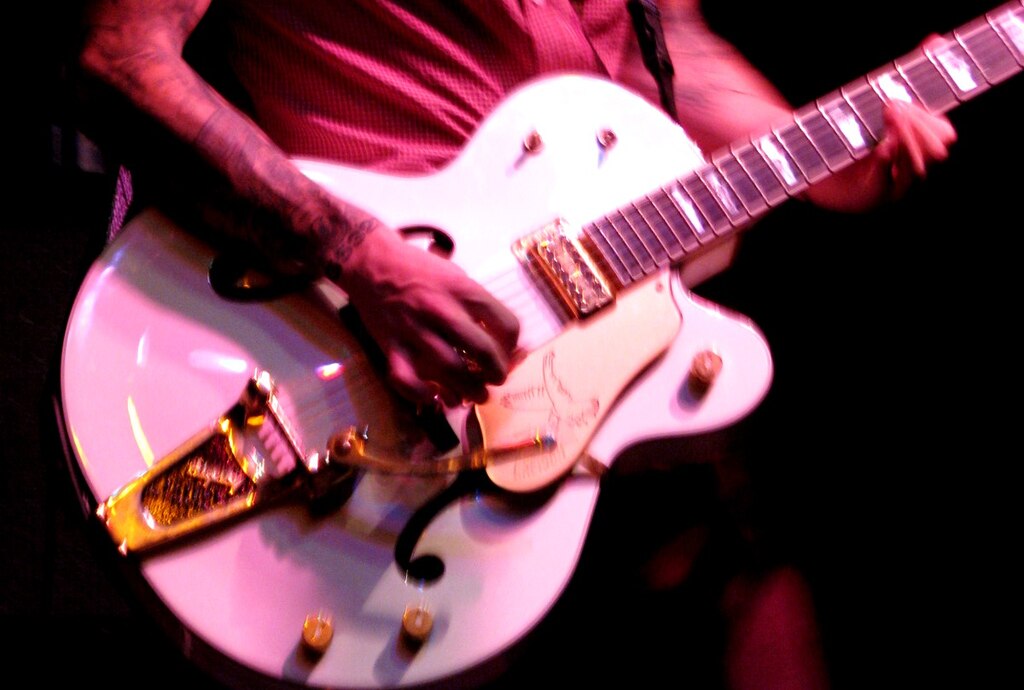
The Gretsch White Falcon, introduced in 1955, is one of the most visually stunning guitars ever made. Its elegant design features a white, glossy finish with gold hardware and distinctive body shape. Known for its clear, bright tone, the White Falcon was often favored by jazz, rockabilly, and country musicians. Chet Atkins and Eddie Cochran were among the notable artists who embraced the White Falcon’s rich, ringing sound.
With its hollow body and single-coil pickups, the White Falcon delivered a unique tone that set it apart from solid-body guitars. The guitar’s massive popularity during the 1950s and 1960s made it synonymous with the “rockabilly” sound. Its craftsmanship and vibrant tone continue to inspire musicians today. The White Falcon is as much a visual icon as it is a musical one.
Epiphone Casino (1961)
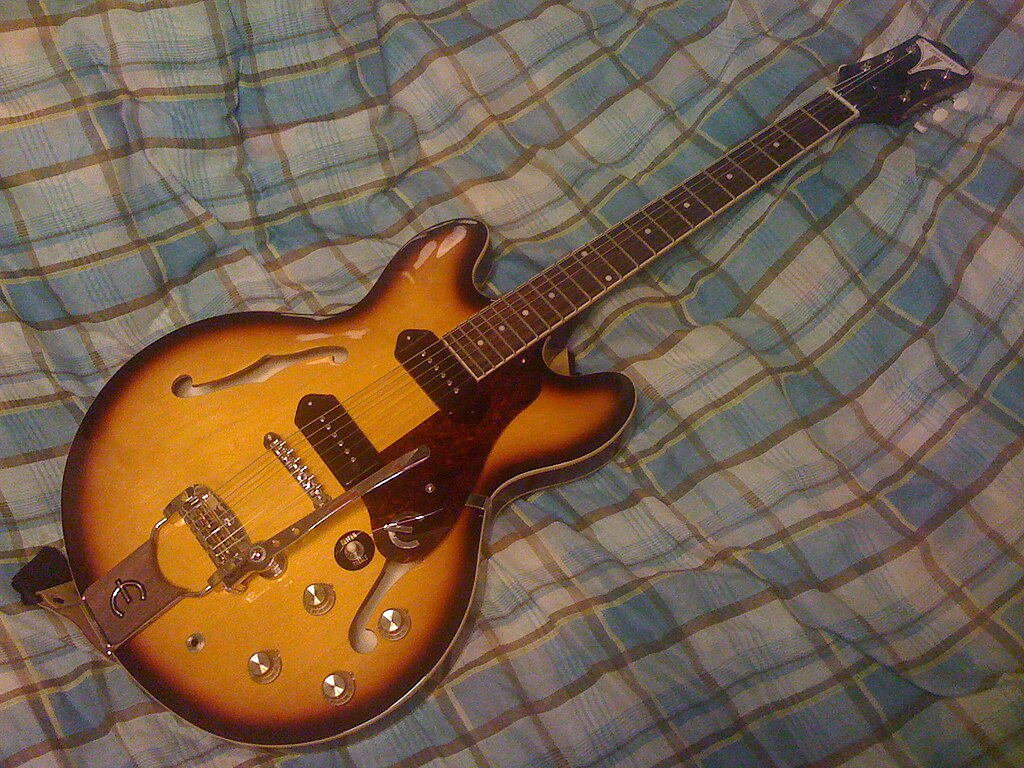
The Epiphone Casino is a legendary semi-hollow body guitar that became famous for its association with the Beatles. John Lennon and George Harrison both played the Casino during the 1960s, using it to shape the sound of some of their most famous songs. The guitar’s warm, mellow tone and versatile design made it perfect for a wide range of music. Its full hollow body produced a deep, resonant sound, making it ideal for both rhythm and lead parts.
The Casino’s P-90 pickups gave it a distinctive, punchy tone that still resonates in today’s music. Its lightweight and comfortable design made it easy for musicians to play for long hours, which was important during extensive touring. The Casino’s place in rock history is solidified due to its use by two of the Beatles. It continues to be a sought-after guitar for vintage collectors.
Fender Jazzmaster (1958)
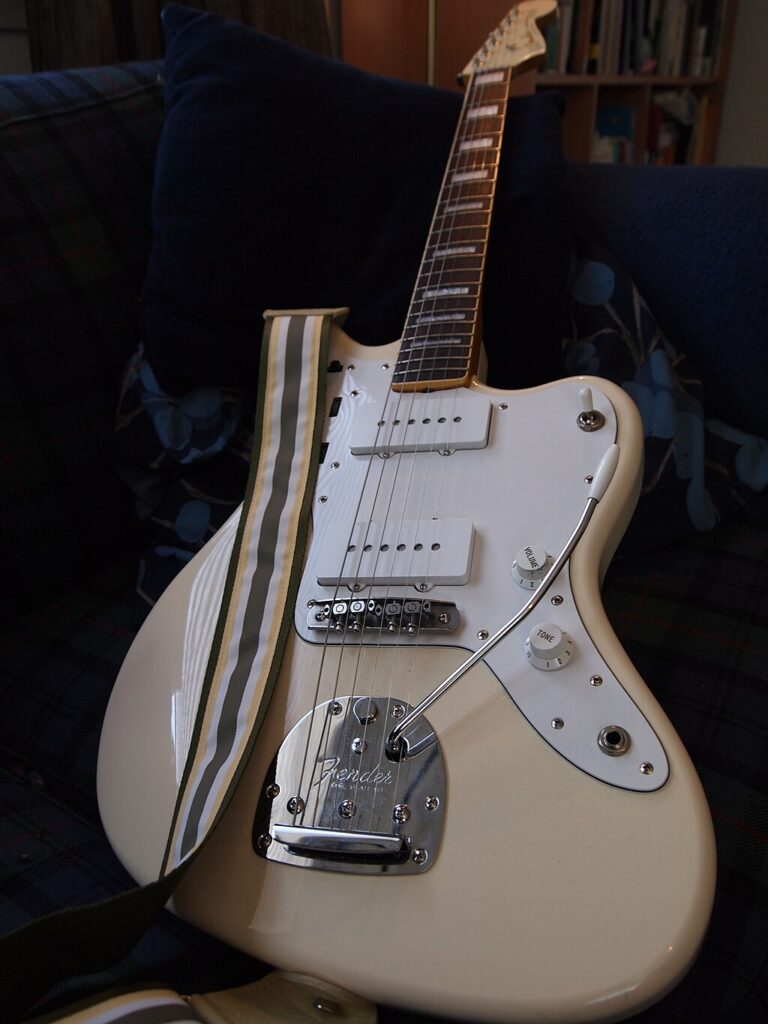
The Fender Jazzmaster, introduced in 1958, became known for its smooth, mellow tone and unique floating tremolo system. It was initially designed for jazz musicians but quickly found its place in surf rock, thanks to its wide range of tonal options. The Jazzmaster’s offset body and distinctive floating bridge allowed for smooth playability and easy adjustment. Artists like Jimi Hendrix and Thurston Moore of Sonic Youth made the Jazzmaster famous with their innovative playing techniques.
The Jazzmaster’s long sustain and rich tone allowed players to explore new musical landscapes. It offered a unique sound that became essential in the development of surf rock and alternative music. Over time, the Jazzmaster became a beloved guitar for artists who favored experimentation and unique tones. It is still widely regarded as a pioneering instrument in the world of electric guitars.
Gibson Firebird (1963)
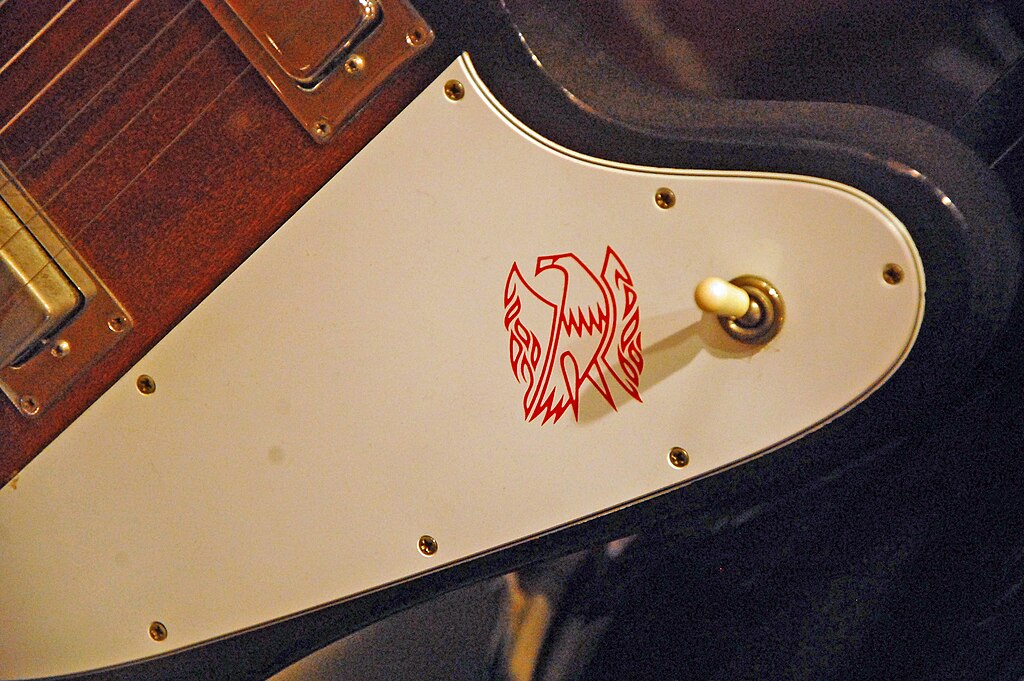
The Gibson Firebird, introduced in 1963, was one of the most unique guitars ever made, thanks to its reverse-body design and innovative neck-through construction. This made the guitar stand out both visually and sonically, offering a bright, cutting sound that cut through the mix. The Firebird became a favorite among rock musicians in the 1960s and 1970s, particularly for its sharp, biting tone. Legendary players like Eric Clapton and Johnny Winter made the Firebird an essential part of their setups.
The Firebird’s combination of humbucking pickups and sleek design made it ideal for both lead and rhythm playing. It had a distinctive sound that made it perfect for early hard rock and blues-rock. The Firebird’s neck-through body construction offered enhanced sustain and resonance. Today, it remains an important piece of guitar history for its innovation and sound.
Fender Mustang (1964)
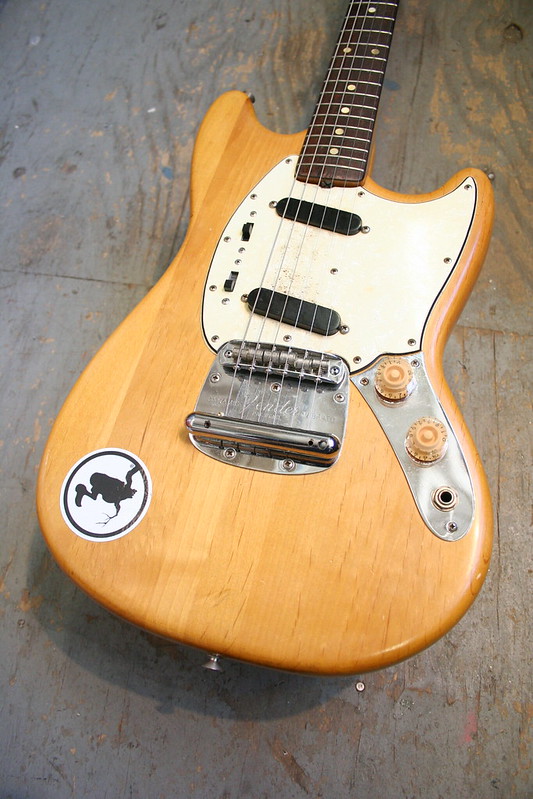
The Fender Mustang, introduced in 1964, became a favorite among younger players and college students due to its affordability and playful design. With its short scale and bright sound, it was easy to play and perfect for early rock and pop. Kurt Cobain of Nirvana later made the Mustang iconic, bringing it into the grunge scene. The guitar’s simple, no-frills design made it accessible for beginners, while its unique tone appealed to seasoned musicians.
The Mustang’s short scale gave it a smooth, slinky feel, making it great for bending strings. Its simplicity meant that musicians could focus more on the music rather than the instrument. The Mustang’s durability and ease of play made it a staple for garage bands and punk rock musicians. Over time, it has developed a cult following, with many musicians still using it today for its distinctive sound.
Martin D-28 (1931)
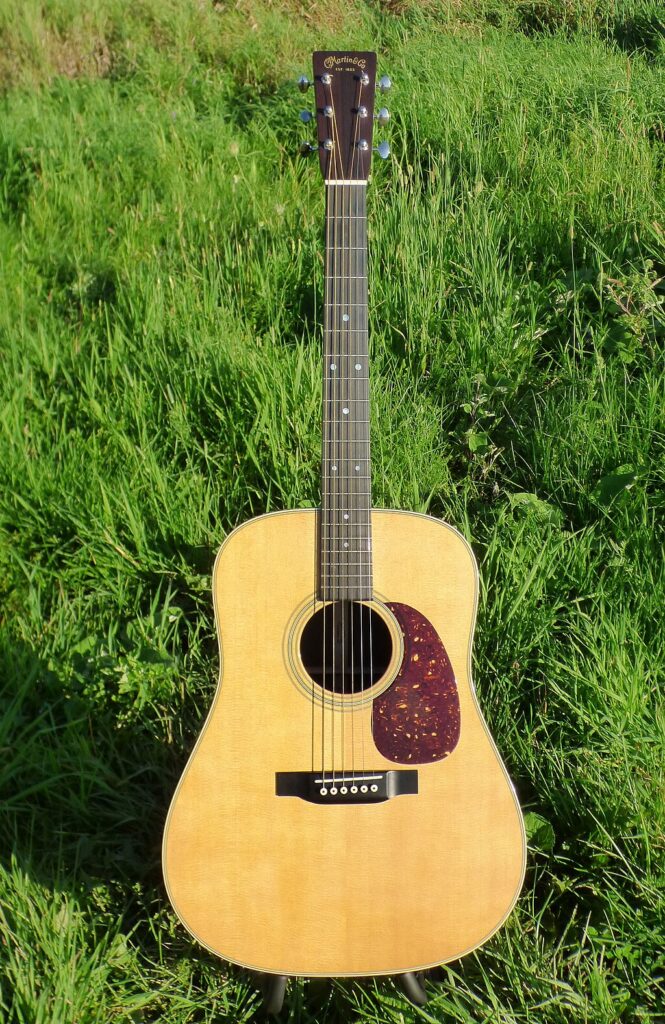
The Martin D-28, introduced in 1931, is considered one of the finest acoustic guitars ever made. It has been used by legendary musicians like Johnny Cash, Neil Young, and Bob Dylan. The D-28’s rich, resonant sound is ideal for both strumming and fingerpicking, with deep bass tones and clear highs. The guitar’s craftsmanship and quality have set the bar for acoustic guitars worldwide.
The Martin D-28’s rosewood back and sides give it a full, balanced sound with great projection. It is known for its strong tonal character and warmth, which makes it highly sought after by musicians. The guitar’s ability to handle various styles of playing has made it a favorite for both beginners and professionals. It remains a symbol of craftsmanship and acoustic excellence in the world of guitars.
This article originally appeared on Avocadu.
